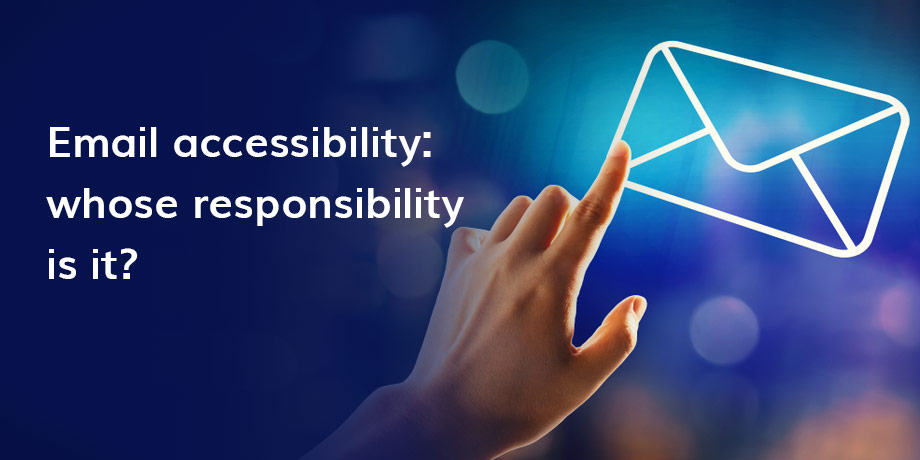
Making your customer emails accessible to the widest range of people requires a clearly defined strategy, across a variety of teams within a company and includes having a digital communication vendor on the same page.
Accessibility is not just a coding change and requirement. Most of the principles that make emails accessible for people with disabilities are applied before the first line of code is written.
These 5 teams are crucial in ensuring email accessibility:
1. Digital communications team
It all starts here. From understanding the brief, the goal and looking to give all customers the best experience .
This group has to ensure that every team or person touching the email (before distribution)is fully up to speed on the requirements for accessibility and how each one will be achieved.
Top tip from our team:
It’s crucial that the entire team understands why this is important.
It not only makes an email easier to read for those who battle to process information (dyslexia or autism), but it helps anyone with a visual impairment that is using a screen reader to make sense of the email.
2. Content writers
A large part of email accessibility lies with the content writer. Many of the writing principles are standard email best practices, such as concise and relevant subject lines, short paragraphs and simple language. These principles become even more important when the email is consumed using a screen reader.
Top tip from our team:
For example, descriptive alternative text for images; button labels that describe what will happen on the destination page; and text equivalents for visual elements like videos. These are all essential elements that the content writer must provide.
3. Email designers
Designers need to ensure a logical flow to the content, as well as select their colors, fonts and layouts carefully to cater to a range of visual impairments, from low vision and color blindness to total blindness. The first principle is to use plenty of white space, which gives the content breathing room and a clear structure.
Top tip from our team:
Elements like tables are tricky to get right for a screen-reader. Be cautious of designing blinking, flickering or looping animation, as this can cause seizures for those that are photosensitive.
4. HTML coders
If the content writer and designer have done their tasks correctly, the developer just has a few extra principles to apply. Of course, if the HTML coder understands the concepts behind accessibility, he or she is better positioned to spot when the copy or design is not going to work optimally.
Top tip from our team:
Steps to understand:
- Headings must be formatted in a logical sequence
- Alternative text or captions need to be inserted for all visual elements (images, videos)
- The developer should check the code for issues that create bad user experience using a screen reader
For example, double spaces in the text will be read out as “blank”; buttons with identical text will sound repetitive and links that don’t have text descriptions will be read out as the full file name.
5. Testers
QA and anyone testing an email should look to ensure the above principles have been properly applied.
Just as a tester uses a checklist to make sure the email is displaying correctly on all devices and email clients, there should be a checklist for the testing of accessibility elements, such as:
- How the email is viewed with images off
- How it looks in ‘dark mode’ (setting to use dark backgrounds and light text)
- Whether all the visual elements have text equivalents
Top tip from our team:
As you can see, email accessibility involves all the teams in the email development process, and each step builds on the good practices of the previous one.















